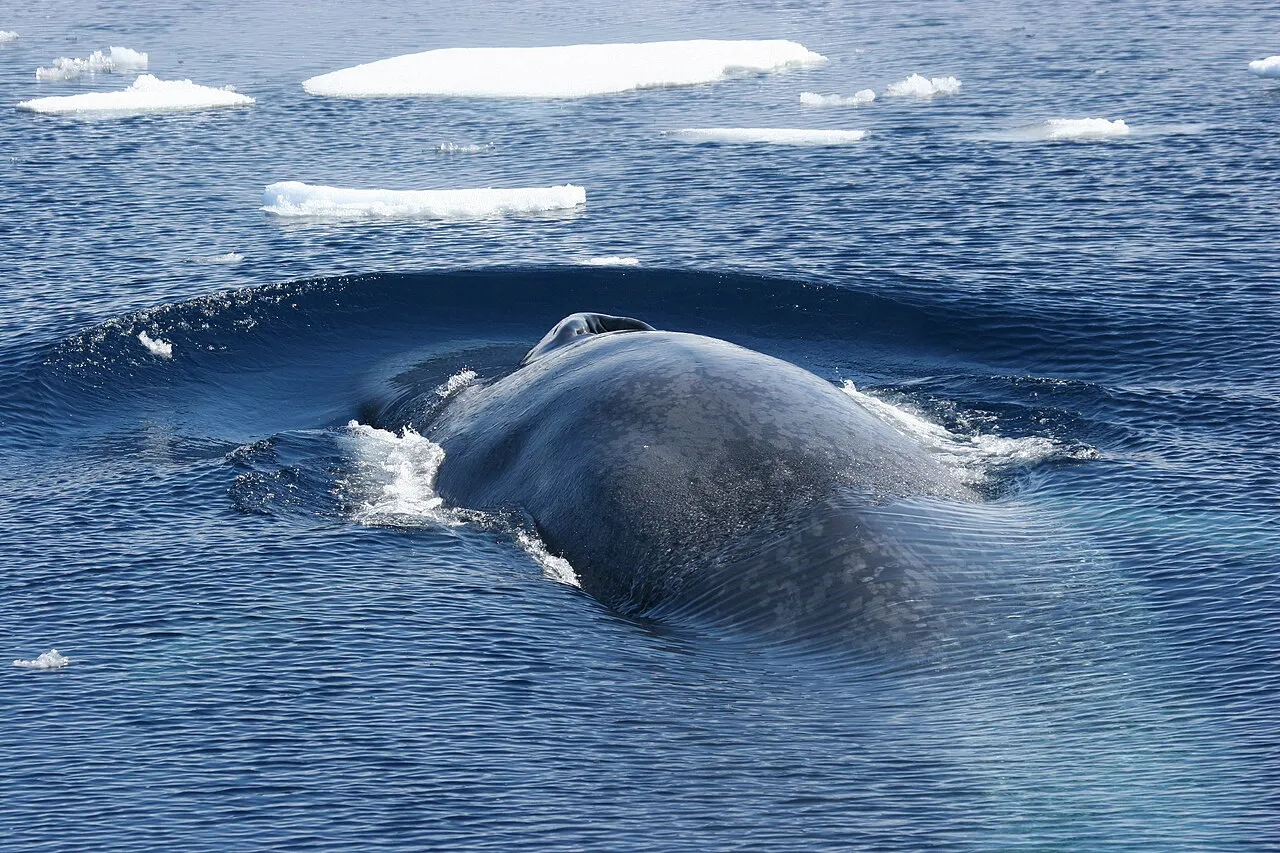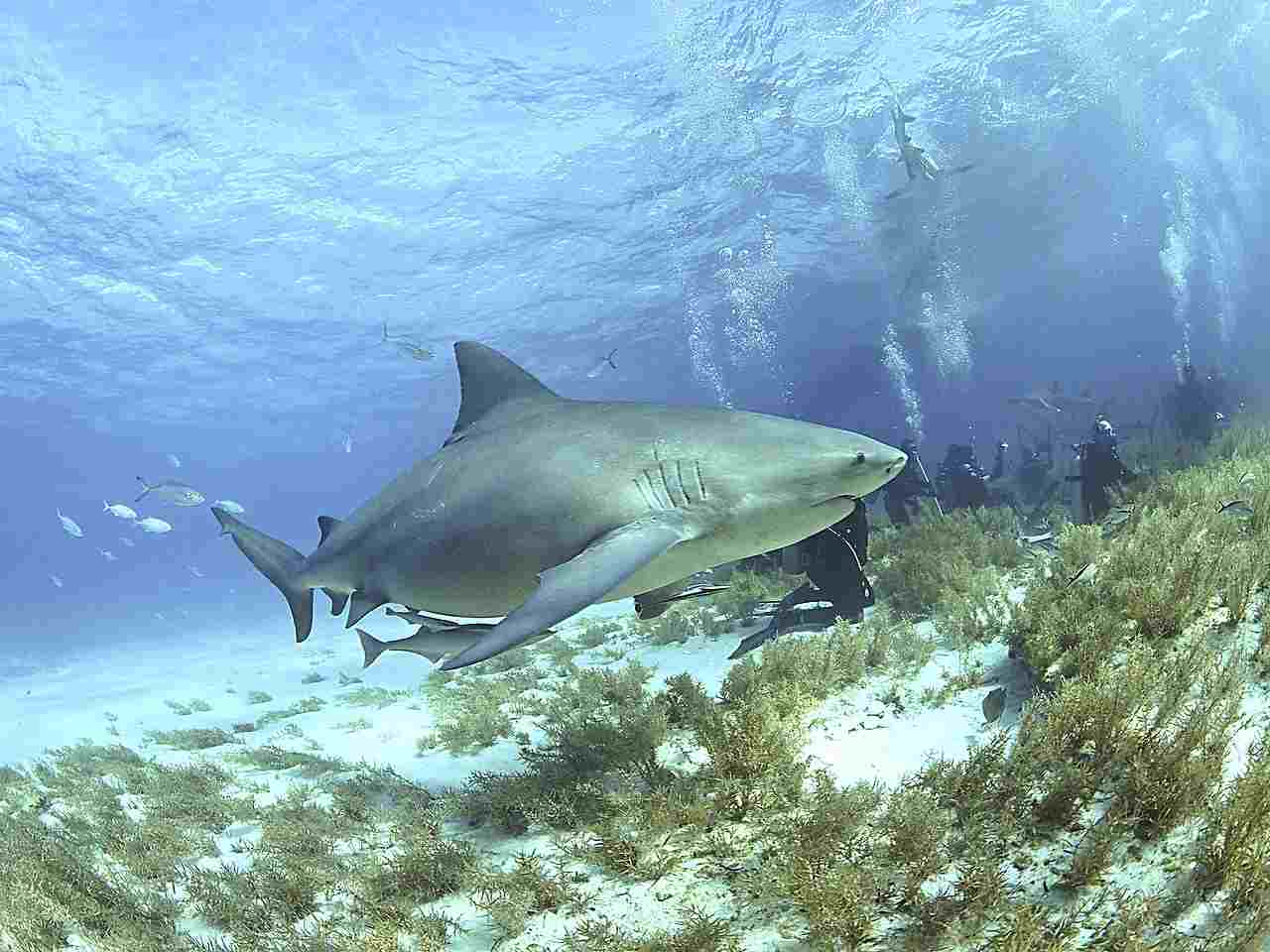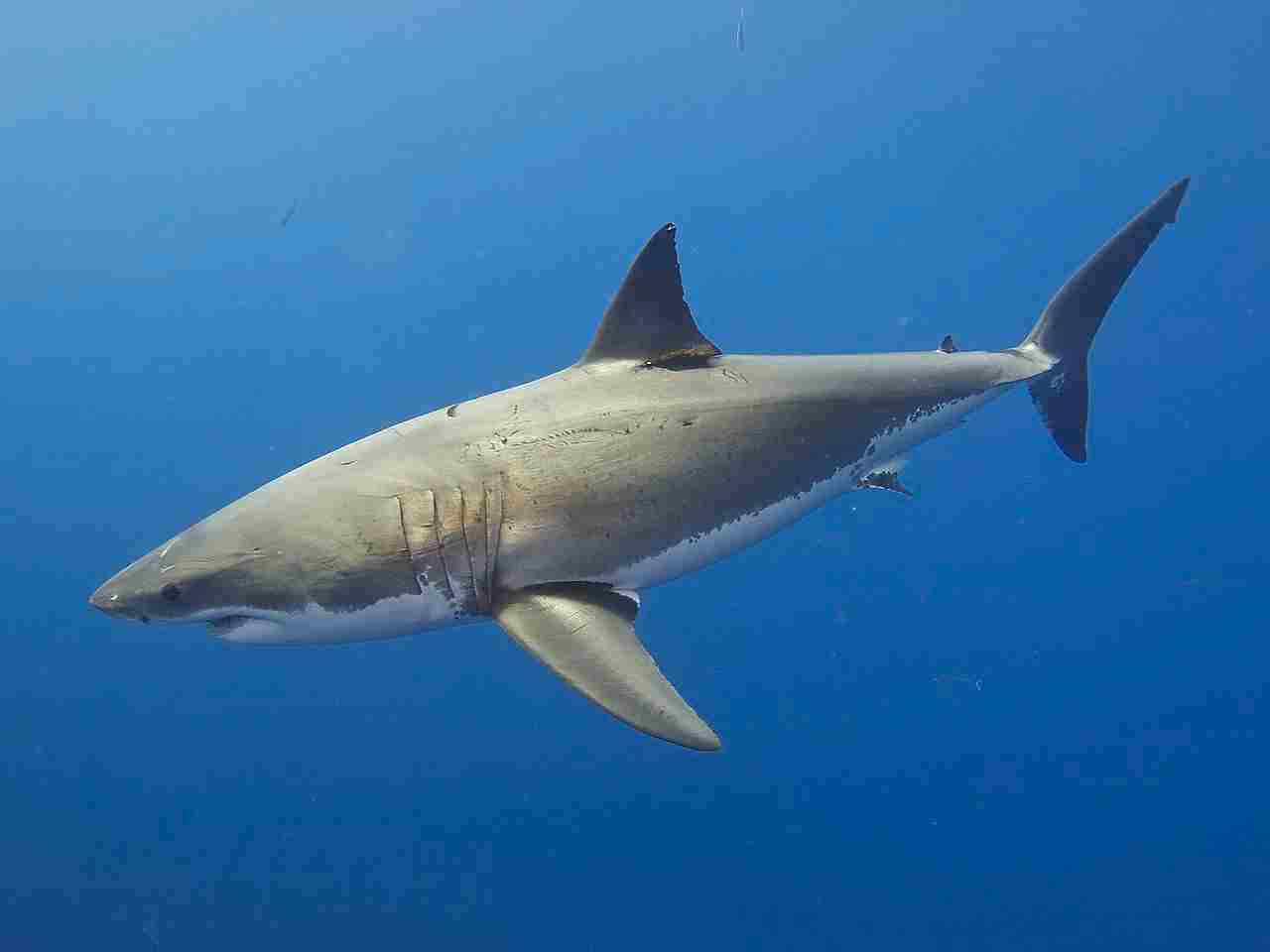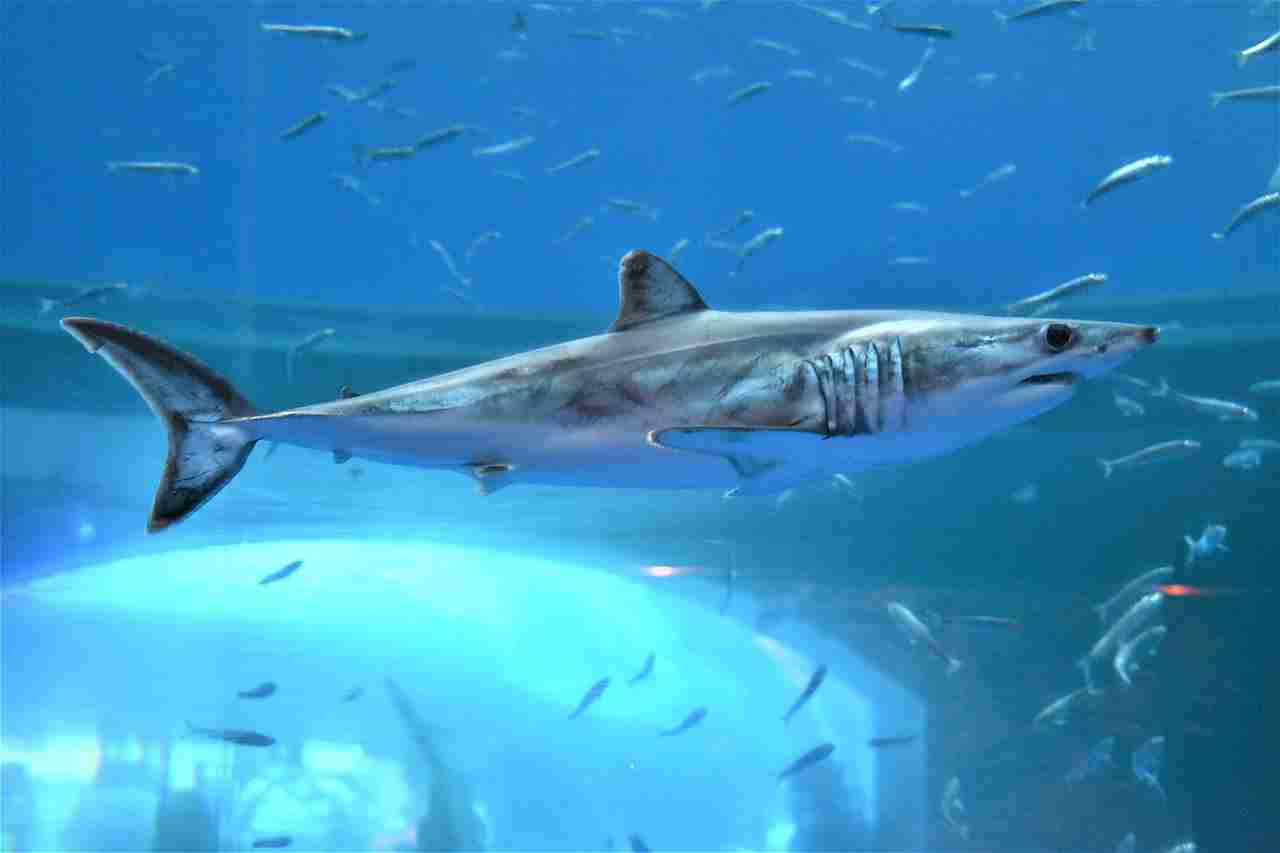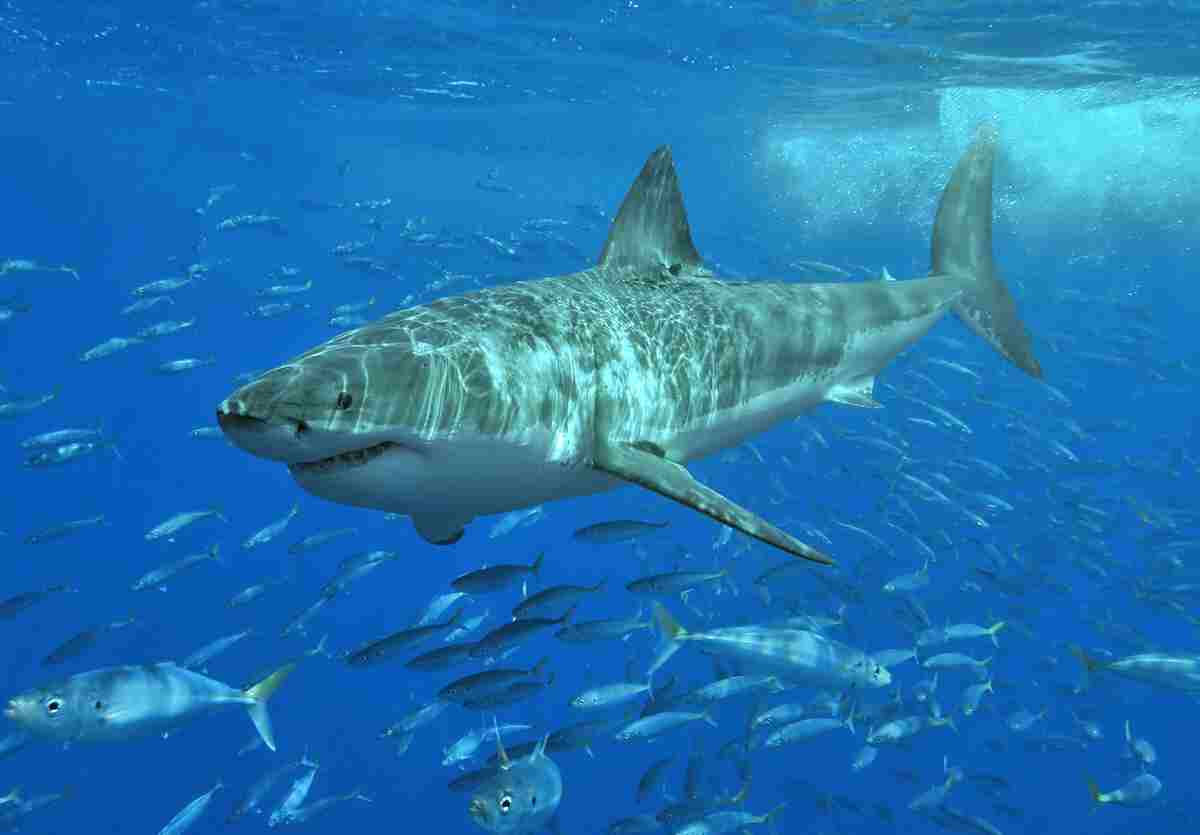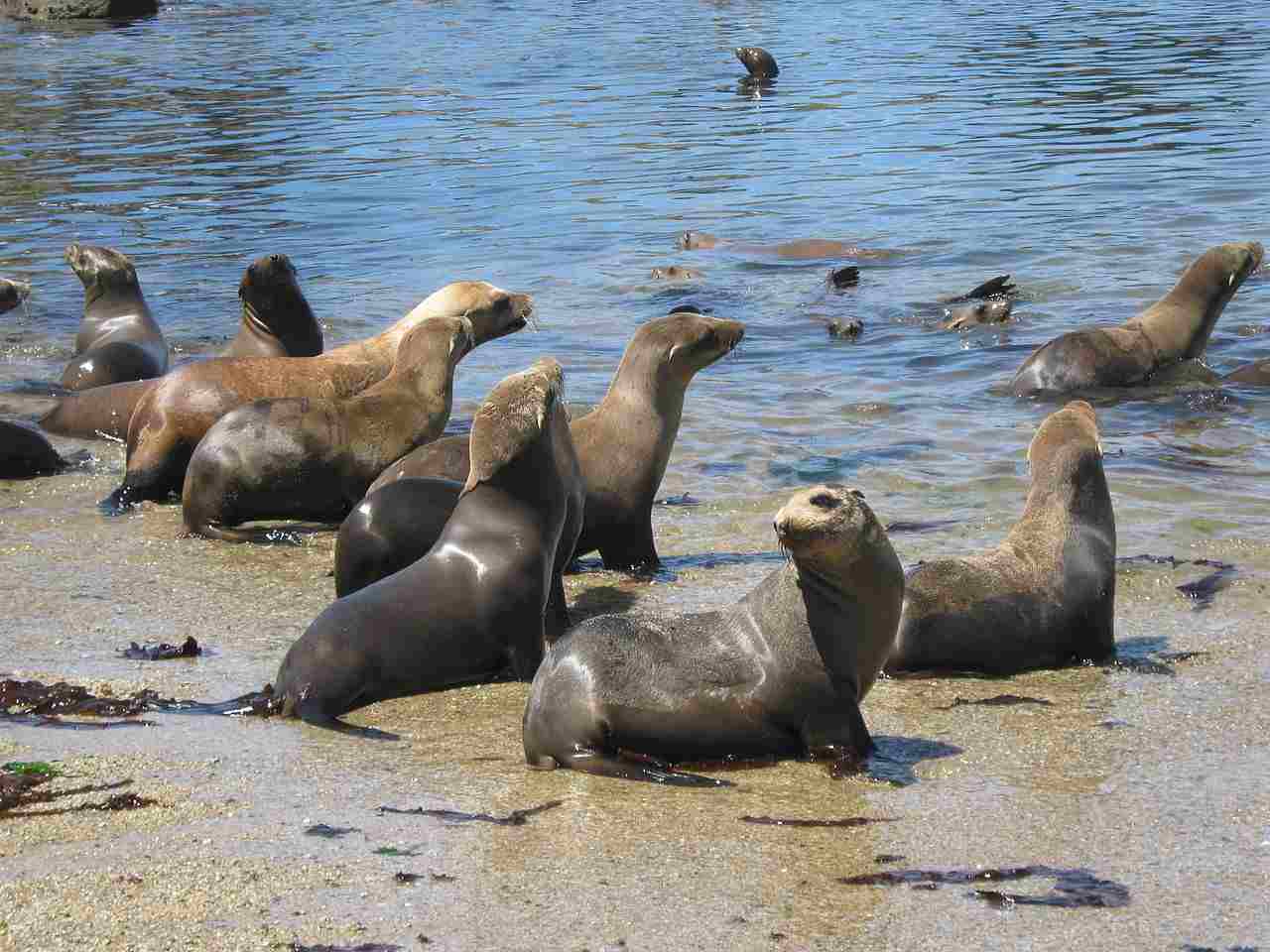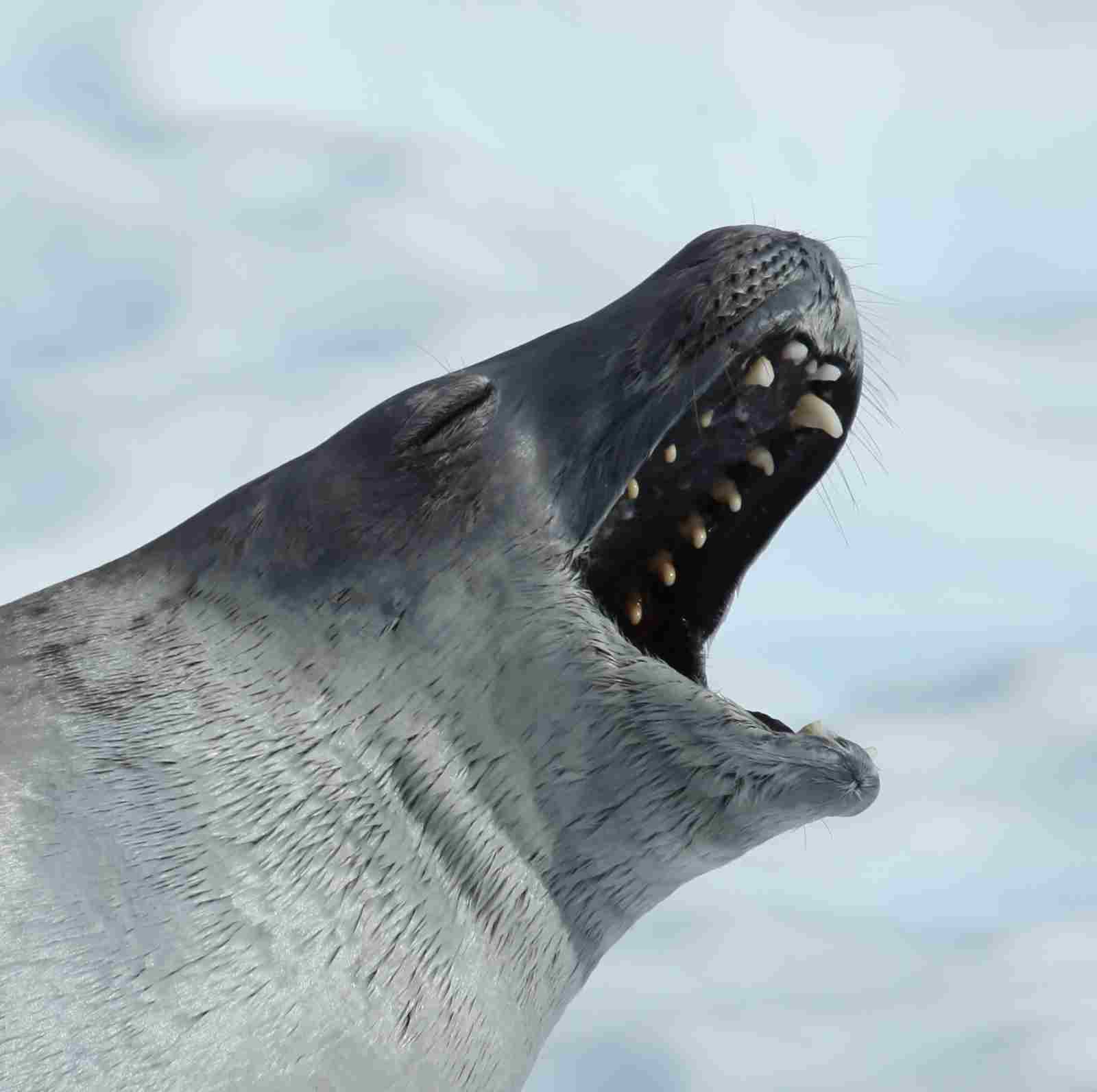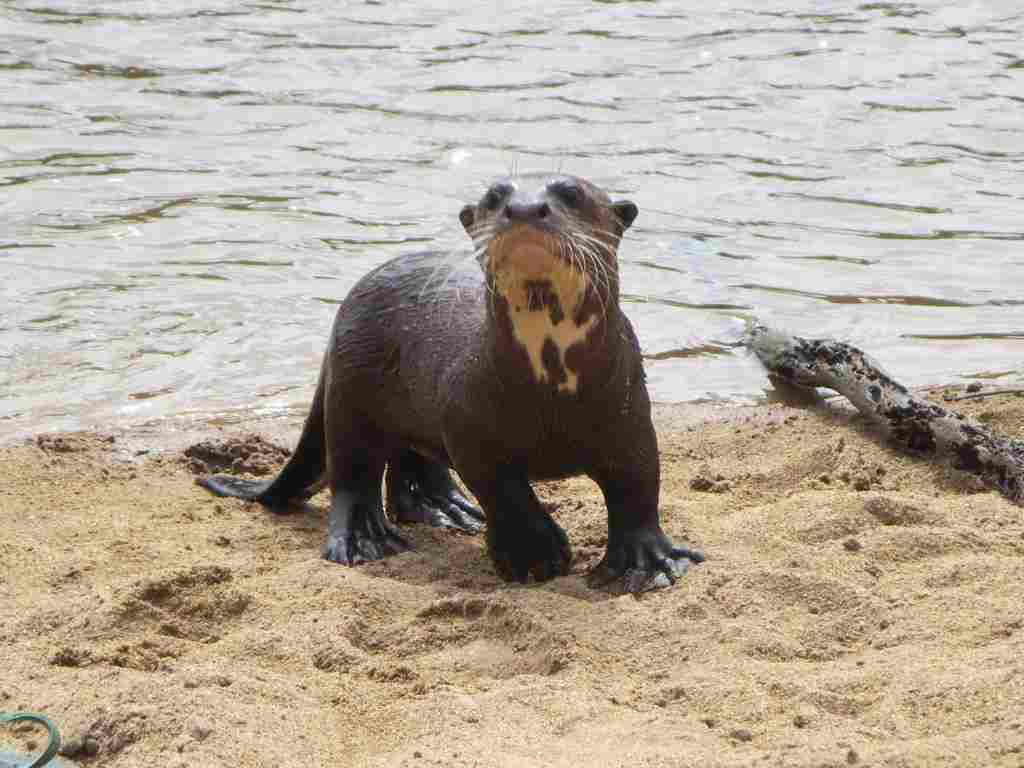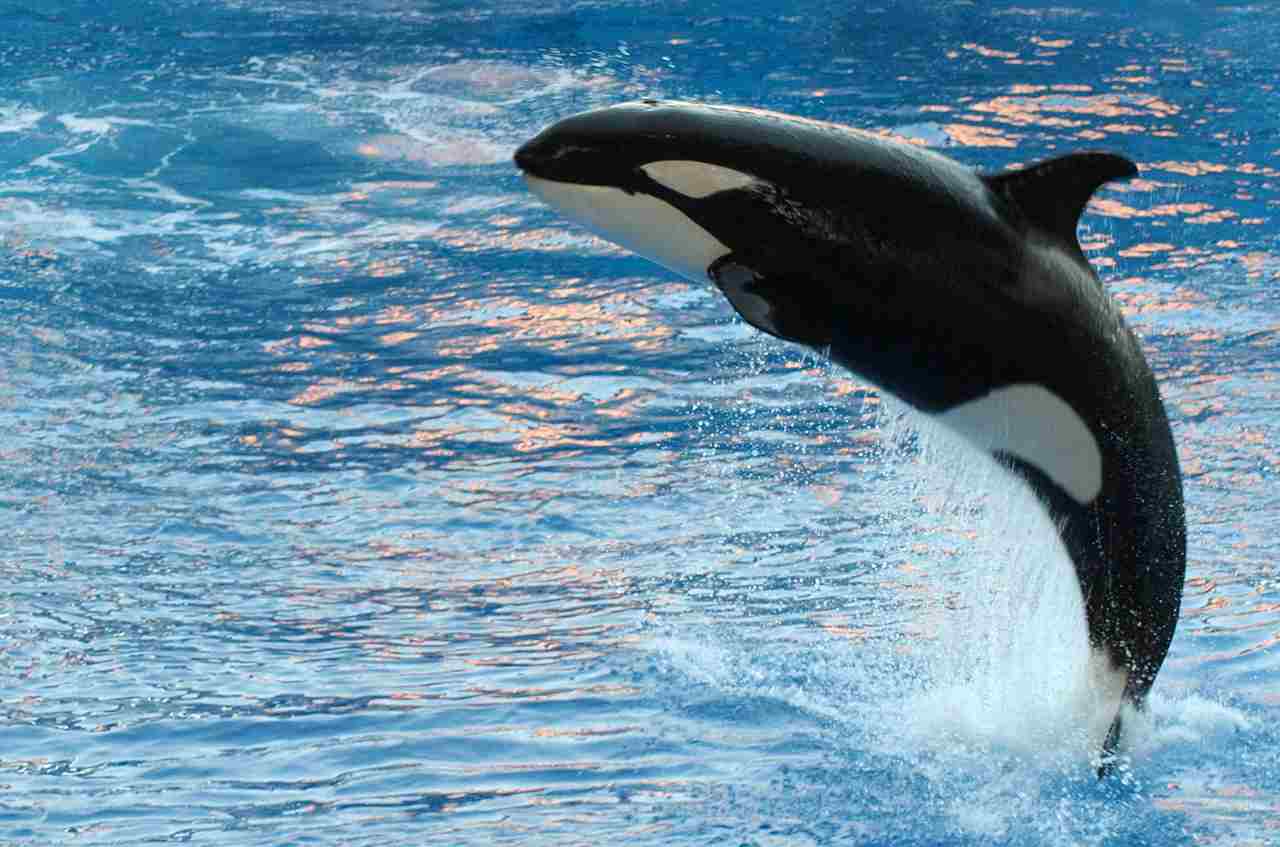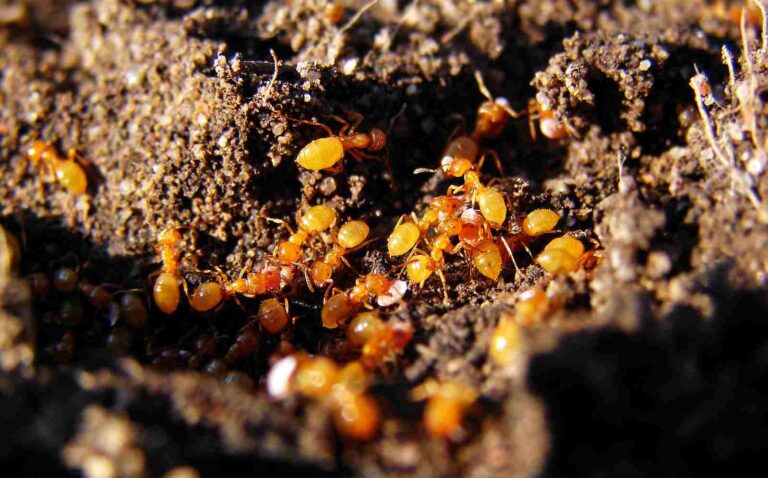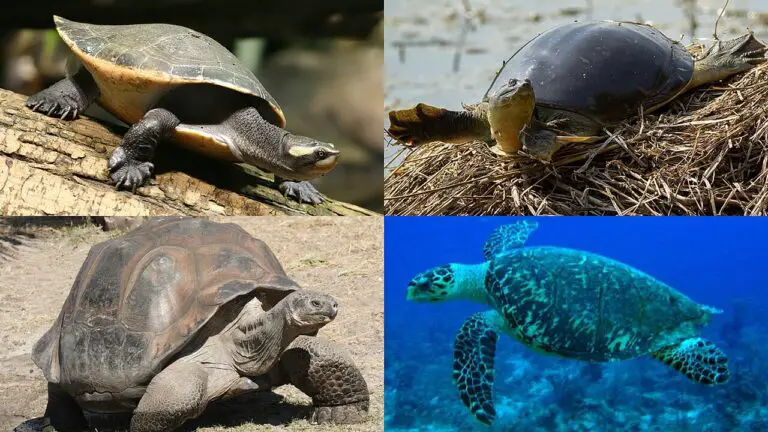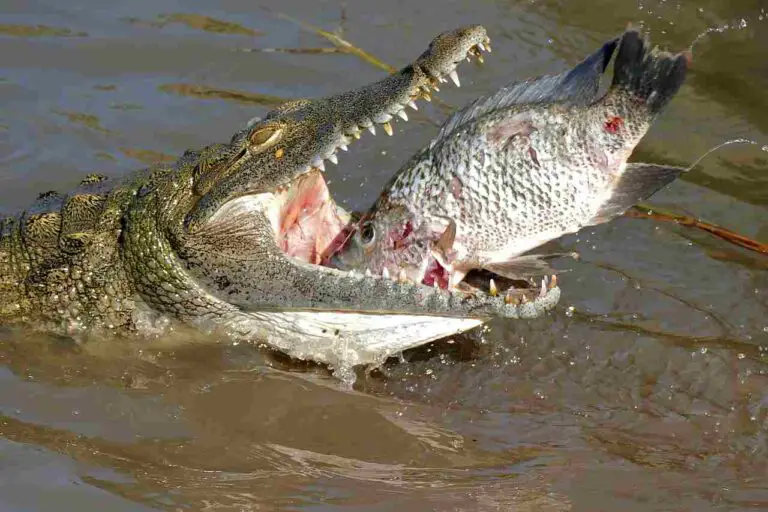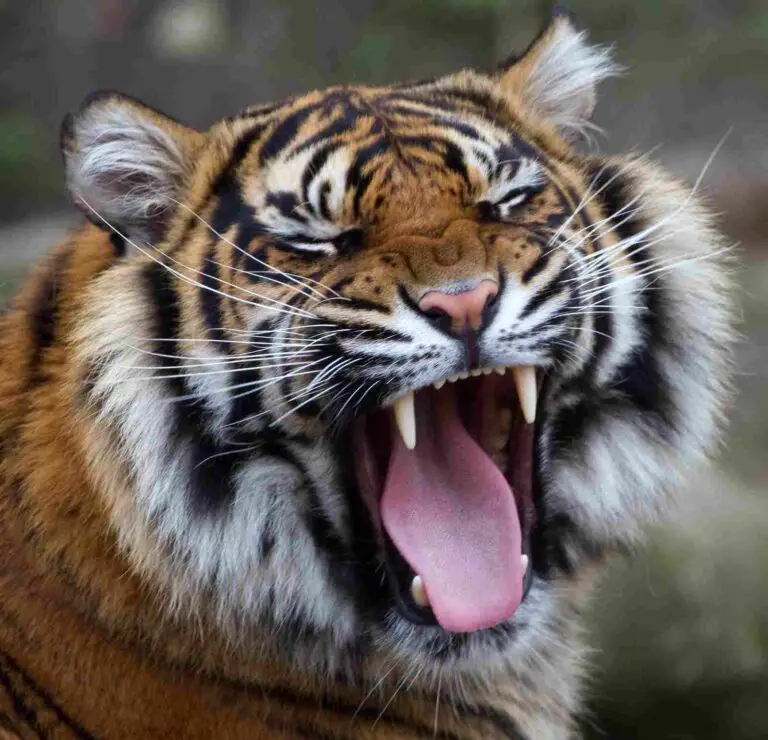11+ Carnivores in The Pacific Ocean and Their Characteristics
Carnivores in the Pacific Ocean are a diverse group of predators vital to marine ecosystems. They include iconic apex predators like Orcas and Great White Sharks, which maintain balance by controlling prey populations. Other carnivores like Tuna and Leatherback sea turtles play essential roles in regulating marine food webs. Additionally, species such as Sea Otters and Fur Seals contribute to ecosystem health by controlling prey abundance and supporting habitat diversity. It’s crucial to protect these carnivores and their habitats through conservation efforts to ensure the long-term health of the Pacific Ocean.
1. Orca
The Orca, also known as the killer whale, reigns as one of the most formidable carnivores in the Pacific Ocean. This apex predator boasts an impressive combination of strength, intelligence, and social organization, making it a force to be reckoned with. With its distinctive black and white coloring and sleek, streamlined body, the Orca is instantly recognizable.
Feeding primarily on fish, seals, and even other whales, Orcas exhibit remarkable hunting strategies, often employing coordinated group tactics to take down prey much larger than themselves. These cooperative hunting techniques, passed down through generations within family pods, showcase the Orca’s complex social structure and communication skills.
Despite its reputation as a fearsome predator, the Orca plays a crucial role in maintaining the balance of marine ecosystems. As a top predator, it helps regulate populations of prey species, preventing overpopulation that could disrupt the delicate equilibrium of the ocean food web.
Beyond its ecological importance, the Orca holds significant cultural and spiritual significance for many indigenous peoples of the Pacific Northwest, who revere these majestic creatures as symbols of strength, wisdom, and kinship with the sea. Unfortunately, Orcas face numerous threats in the modern world, including habitat degradation, pollution, and declining prey populations, underscoring the urgent need for conservation efforts to protect these magnificent animals and the marine environments they call home.
2. Great White Shark
The Great White Shark, with its iconic torpedo-shaped body and rows of razor-sharp teeth, commands respect as one of the ocean’s most formidable predators. Found throughout the Pacific Ocean, these apex predators possess an acute sense of smell and remarkable speed, enabling them to detect and pursue prey with astonishing precision.
Feeding primarily on marine mammals such as seals and sea lions, as well as large fish like tuna, the Great White Shark is a vital component of the Pacific Ocean’s marine ecosystem. As a top predator, it helps regulate the populations of its prey species, contributing to the overall health and balance of the ocean environment.
Despite their fearsome reputation, Great White Sharks are not indiscriminate killers. In fact, they play a crucial role in maintaining the ecological balance of the ocean by targeting weak or injured individuals within prey populations, thereby enhancing the overall fitness of their prey species.
However, like many apex predators, Great White Sharks face significant threats, including habitat loss, overfishing, and accidental capture in fishing gear. Conservation efforts aimed at protecting these majestic creatures are essential to ensure their survival and the preservation of the delicate marine ecosystems they inhabit.
3. Tuna
Tuna, encompassing several species such as bluefin, yellowfin, and albacore, are among the most sought-after carnivorous fish in the Pacific Ocean. Renowned for their speed, agility, and endurance, these sleek predators inhabit both coastal and open ocean waters, where they play a crucial role in the marine food chain.
Feeding primarily on smaller fish, squid, and crustaceans, tuna are apex predators in their own right, preying on a wide range of organisms throughout their lifespan. Their highly migratory behavior allows them to traverse vast distances in search of food, making them a ubiquitous presence in the Pacific Ocean.
Tuna’s economic importance cannot be overstated, as they support lucrative commercial fisheries worldwide. However, overfishing and unsustainable fishing practices pose significant threats to tuna populations, leading to concerns about their long-term viability and the health of marine ecosystems.
Efforts to manage tuna fisheries sustainably, including the establishment of catch limits, seasonal closures, and marine protected areas, are critical for ensuring the continued abundance of these prized predators and the conservation of the Pacific Ocean’s biodiversity.
4. Leatherback
The Leatherback sea turtle, the largest of all sea turtle species, represents a unique carnivorous inhabitant of the Pacific Ocean. With its distinctive leathery shell and powerful front flippers, the Leatherback is a master of long-distance ocean travel, capable of traversing entire ocean basins in search of its preferred prey: jellyfish.
Unlike other sea turtles, which primarily feed on plant matter, the Leatherback’s carnivorous diet sets it apart as a specialized predator in the marine environment. Its sharp, beak-like mouth is perfectly adapted for capturing and consuming jellyfish, which it locates using a combination of visual and sensory cues.
As a keystone species, Leatherback sea turtles play a vital role in regulating jellyfish populations, preventing these gelatinous creatures from overwhelming marine ecosystems. By controlling jellyfish numbers, Leatherbacks help maintain the ecological balance of the ocean and support the health of other marine species.
However, Leatherback sea turtles face a myriad of threats, including habitat loss, pollution, climate change, and accidental capture in fishing gear. Conservation efforts aimed at protecting nesting beaches, reducing plastic pollution, and implementing fisheries regulations are essential for safeguarding the future of these magnificent creatures and the fragile ecosystems they inhabit.
5. Sea Otter
The charismatic Sea Otter is a carnivorous marine mammal native to the Pacific Ocean, known for its playful behavior and remarkable adaptations for life in the water. With its dense fur, webbed feet, and dexterous paws, the Sea Otter is perfectly suited for hunting and foraging in the coastal habitats it calls home.
Feeding primarily on marine invertebrates such as clams, crabs, and sea urchins, Sea Otters play a crucial role in shaping the structure of kelp forest ecosystems. By preying on sea urchins, which graze on kelp, Sea Otters help maintain the balance between predator and prey, ensuring the health and resilience of these vital marine habitats.
Despite their important ecological role, Sea Otters have faced significant challenges, including historical exploitation for their fur and habitat degradation due to human activities. Conservation efforts, including reintroduction programs and habitat restoration initiatives, have helped stabilize Sea Otter populations in some areas, but ongoing threats such as pollution and oil spills continue to pose risks to their long-term survival.
6. Blue Whale
As the largest animal on the planet, the Blue Whale is a magnificent carnivore that roams the depths of the Pacific Ocean in search of its primary prey: krill. With its enormous size and distinctive mottled blue-gray coloring, the Blue Whale is an awe-inspiring sight for anyone lucky enough to encounter one in the wild.
Feeding exclusively on tiny crustaceans known as krill, Blue Whales employ a unique feeding strategy called lunge feeding, where they engulf large volumes of water and filter out the krill using specialized baleen plates in their mouths. This efficient feeding mechanism allows Blue Whales to consume vast quantities of krill each day, supporting their massive size and energy requirements.
As keystone species in the marine ecosystem, Blue Whales play a crucial role in the transfer of energy from lower to higher trophic levels. By consuming krill, they help regulate krill populations, preventing them from overgrazing on phytoplankton and disrupting the balance of the marine food web.
Despite being protected under international conservation agreements, Blue Whales face numerous threats, including habitat degradation, ship strikes, entanglement in fishing gear, and noise pollution. Efforts to mitigate these threats and protect critical feeding and breeding areas are essential for ensuring the continued survival of these magnificent creatures.
7. Walrus
The Walrus, with its distinctive tusks and bristly whiskers, is a carnivorous marine mammal found in the Arctic waters of the Pacific Ocean. Known for their social nature and massive size, Walruses are well-adapted to their icy habitat, where they feed primarily on a diet of clams, mussels, and other bottom-dwelling invertebrates.
Using their sensitive whiskers and powerful flippers, Walruses are skilled hunters, capable of locating and excavating prey from the seafloor with remarkable precision. Their specialized dentition and powerful jaw muscles allow them to crush the hard shells of shellfish, extracting the nutrient-rich flesh within.
Walruses also play an important ecological role in their Arctic ecosystem, as their foraging activities help maintain the health and productivity of benthic communities. By controlling populations of bivalve mollusks, Walruses prevent overgrazing and promote the diversity of species within their habitat.
Despite their formidable adaptations, Walruses face increasing threats from climate change, habitat loss, pollution, and human disturbance. The rapid melting of sea ice, in particular, poses a significant risk to Walrus populations, as it reduces their access to critical feeding and resting areas. Conservation efforts aimed at addressing these threats and protecting Walrus habitat are essential for ensuring the long-term survival of these iconic Arctic carnivores.
8. True Seal
True seals, also known as earless seals, are a diverse group of carnivorous marine mammals found throughout the Pacific Ocean. Characterized by their streamlined bodies, lack of external ear flaps, and short flippers, true seals are highly adapted for life in the water, where they hunt and forage for their prey.
Feeding primarily on fish, squid, and crustaceans, true seals are skilled hunters, capable of diving to great depths in search of food. Their streamlined bodies and efficient swimming techniques enable them to pursue agile prey and navigate the underwater environment with ease.
True seals play a vital role in the marine ecosystem as top predators, helping to regulate the populations of their prey species and maintain the balance of marine food webs. By controlling prey abundance, they indirectly influence the distribution and behavior of other marine organisms, contributing to the overall health and stability of ocean ecosystems.
Despite their ecological importance, true seals face a range of threats, including habitat loss, pollution, climate change, and interactions with humans, such as accidental entanglement in fishing gear and disturbance at haul-out sites. Conservation efforts aimed at mitigating these threats and protecting true seal habitat are essential for ensuring the long-term survival of these iconic marine mammals.
9. Fur Seal
Fur seals, members of the pinniped family, are carnivorous marine mammals found in the Pacific Ocean, where they inhabit coastal and subantarctic waters. With their dense fur coats and agile swimming abilities, fur seals are well-adapted to life in the marine environment, where they hunt and forage for their prey.
Feeding primarily on fish, squid, and crustaceans, fur seals are opportunistic predators, capable of exploiting a wide range of prey species depending on local abundance and availability. Their sharp teeth and powerful jaws enable them to capture and consume their prey with precision and efficiency.
Fur seals play a crucial role in the marine ecosystem as top predators, helping to regulate the populations of their prey species and maintain the balance of marine food webs. By controlling prey abundance, they help prevent overgrazing and maintain the health and diversity of marine ecosystems.
Despite their ecological importance, fur seals face numerous threats, including habitat loss, overfishing, pollution, and climate change. Conservation efforts aimed at protecting fur seal habitat, reducing human impacts, and mitigating global threats such as climate change are essential for ensuring the long-term survival of these charismatic marine mammals.
10. Chungungo
The Chungungo, also known as the marine otter, is a carnivorous mammal found along the Pacific coast of South America, from Peru to southern Chile. Unlike their freshwater relatives, marine otters are uniquely adapted to life in marine environments, where they hunt and forage for their prey.
Feeding primarily on fish, crustaceans, and mollusks, Chungungos are agile hunters, capable of diving and swimming in the turbulent coastal waters where they make their home. Their long, slender bodies and webbed feet enable them to navigate rocky shorelines and hunt in shallow coastal waters with ease.
Chungungos play a vital role in the marine ecosystem as top predators, helping to regulate the populations of their prey species and maintain the balance of coastal food webs. By controlling prey abundance, they help preserve the health and diversity of nearshore marine ecosystems.
Despite their ecological importance, Chungungos face numerous threats, including habitat loss, pollution, overfishing, and human disturbance. Conservation efforts aimed at protecting Chungungo habitat, reducing human impacts, and promoting sustainable fishing practices are essential for ensuring the long-term survival of these charismatic marine mammals.
11. California Sea Lion
The California Sea Lion, a charismatic member of the pinniped family, is a carnivorous marine mammal found along the Pacific coast of North America, from British Columbia to Baja California. Known for their sleek bodies, playful behavior, and distinctive barking vocalizations, California Sea Lions are a familiar sight in coastal waters and on rocky shorelines.
Feeding primarily on fish, squid, and crustaceans, California Sea Lions are agile hunters, capable of diving to great depths in search of their prey. Their streamlined bodies and powerful flippers enable them to navigate the ocean with ease, while their keen senses help them locate and capture food in a variety of marine habitats.
California Sea Lions play a crucial role in the marine ecosystem as top predators, helping to regulate the populations of their prey species and maintain the balance of coastal food webs. By controlling prey abundance, they help support the health and diversity of marine ecosystems along the Pacific coast.
Despite their ecological importance, California Sea Lions face numerous threats, including habitat loss, pollution, entanglement in fishing gear, and interactions with humans. Conservation efforts aimed at protecting sea lion habitat, reducing human impacts, and promoting sustainable fishing practices are essential for ensuring the long-term survival of these iconic marine mammals.
12. Polar Bear
The Polar Bear, the largest land carnivore on Earth, is a formidable predator adapted to life in the Arctic regions of the Pacific Ocean, where it hunts seals and other marine mammals on sea ice. With its thick fur coat, insulating blubber layer, and keen sense of smell, the Polar Bear is uniquely suited to survive in the harsh Arctic environment.
Feeding primarily on seals, which it hunts by stalking them on sea ice or ambushing them at breathing holes, Polar Bears are powerful predators capable of taking down prey much larger than themselves. Their incredible strength, agility, and patience make them highly effective hunters in the icy waters of the Arctic Ocean.
Polar Bears play a crucial role in Arctic ecosystems as top predators, helping to regulate the populations of their prey species and maintain the balance of marine food webs. By controlling seal populations, they indirectly influence the distribution and behavior of other marine organisms, contributing to the overall health and stability of Arctic ecosystems.
Despite their formidable adaptations, Polar Bears face increasing threats from climate change, habitat loss, pollution, and reduced access to their primary prey due to declining sea ice. Conservation efforts aimed at mitigating these threats and protecting Polar Bear habitat are essential for ensuring the long-term survival of these iconic Arctic predators.
*Summary
-
Orca:
-
Apex predator known for strength, intelligence, and social organization
-
Feeds on fish, seals, and even other whales, using coordinated group tactics
-
Crucial for ecosystem balance; revered by indigenous cultures
-
-
Great White Shark:
-
Iconic predator with torpedo-shaped body and sharp teeth
-
Feeds on marine mammals and large fish; important for marine ecosystem balance
-
Faces threats like habitat loss and overfishing; conservation efforts crucial
-
-
Tuna:
-
Highly migratory carnivorous fish; includes species like bluefin and yellowfin
-
Feeds on smaller fish and squid; economically important but faces overfishing threats
-
Sustainable management crucial for conservation of tuna populations
-
-
Leatherback:
-
Largest sea turtle species; carnivorous diet of jellyfish
-
Plays vital role in regulating jellyfish populations; faces threats from habitat loss and pollution
-
Conservation efforts needed to protect nesting beaches and reduce human impacts
-
-
Sea Otter:
-
Carnivorous marine mammal known for playful behavior
-
Feeds on marine invertebrates, helps maintain kelp forest ecosystems
-
Threatened by historical exploitation and habitat degradation; conservation efforts ongoing
-
-
Blue Whale:
-
Largest animal on Earth; feeds exclusively on krill
-
Important for transferring energy in marine ecosystems; faces threats like ship strikes and pollution
-
International conservation efforts crucial for protection
-
-
Walrus:
-
Arctic carnivore with distinctive tusks; feeds on bivalve mollusks
-
Plays vital role in Arctic ecosystem; threatened by climate change and habitat loss
-
Conservation efforts needed to protect habitat and reduce human impacts
-
-
True Seal:
-
Earless seals found throughout the Pacific Ocean
-
Feeds on fish and squid; plays important role as top predator
-
Faces threats like habitat loss and pollution; conservation efforts essential
-
-
Fur Seal:
-
Pinniped found in coastal and subantarctic waters
-
Feeds on fish and crustaceans; important for marine ecosystem balance
-
Threatened by overfishing and habitat loss; conservation efforts crucial
-
-
Chungungo:
-
Marine otter found along the Pacific coast of South America
-
Feeds on fish, crustaceans, and mollusks; plays vital role in coastal ecosystems
-
Threatened by habitat loss and pollution; conservation efforts essential
-
-
California Sea Lion:
-
Carnivorous marine mammal found along the Pacific coast of North America
-
Feeds on fish, squid, and crustaceans; important for coastal ecosystem balance
-
Faces threats like habitat loss and entanglement in fishing gear; conservation efforts needed
-
-
Polar Bear:
-
Largest land carnivore; hunts seals in Arctic regions of the Pacific Ocean
-
Key predator in Arctic ecosystems; threatened by climate change and habitat loss
-
Conservation efforts essential for long-term survival
-
| Carnivore | Summary |
| Orca |
Apex predator known for strength, intelligence, and social organization. Feeds on fish, seals, and even other whales, using coordinated group tactics. Crucial for ecosystem balance; revered by indigenous cultures.
|
| Great White Shark |
Iconic predator with torpedo-shaped body and sharp teeth. Feeds on marine mammals and large fish; important for marine ecosystem balance. Faces threats like habitat loss and overfishing; conservation efforts crucial.
|
| Tuna |
Highly migratory carnivorous fish; includes species like bluefin and yellowfin. Feeds on smaller fish and squid; economically important but faces overfishing threats. Sustainable management crucial for conservation of tuna populations.
|
| Leatherback |
Largest sea turtle species; carnivorous diet of jellyfish. Plays vital role in regulating jellyfish populations; faces threats from habitat loss and pollution. Conservation efforts needed to protect nesting beaches and reduce human impacts.
|
| Sea Otter |
Carnivorous marine mammal known for playful behavior. Feeds on marine invertebrates, helps maintain kelp forest ecosystems. Threatened by historical exploitation and habitat degradation; conservation efforts ongoing.
|
| Blue Whale |
Largest animal on Earth; feeds exclusively on krill. Important for transferring energy in marine ecosystems; faces threats like ship strikes and pollution. International conservation efforts crucial for protection.
|
| Walrus |
Arctic carnivore with distinctive tusks; feeds on bivalve mollusks. Plays vital role in Arctic ecosystem; threatened by climate change and habitat loss. Conservation efforts needed to protect habitat and reduce human impacts.
|
| True Seal |
Earless seals found throughout the Pacific Ocean. Feeds on fish and squid; plays important role as top predator. Faces threats like habitat loss and pollution; conservation efforts essential.
|
| Fur Seal |
Pinniped found in coastal and subantarctic waters. Feeds on fish and crustaceans; important for marine ecosystem balance. Threatened by overfishing and habitat loss; conservation efforts crucial.
|
| Chungungo |
Marine otter found along the Pacific coast of South America. Feeds on fish, crustaceans, and mollusks; plays vital role in coastal ecosystems. Threatened by habitat loss and pollution; conservation efforts essential.
|
| California Sea Lion |
Carnivorous marine mammal found along the Pacific coast of North America. Feeds on fish, squid, and crustaceans; important for coastal ecosystem balance. Faces threats like habitat loss and entanglement in fishing gear; conservation efforts needed.
|
| Polar Bear |
Largest land carnivore; hunts seals in Arctic regions of the Pacific Ocean. Key predator in Arctic ecosystems; threatened by climate change and habitat loss. Conservation efforts essential for long-term survival.
|
Related FAQs
Q: Are killer whales (Orcas) dangerous to humans? A: While there have been very few incidents of wild Orcas attacking humans, it’s essential to remember that they are apex predators and should be treated with caution and respect. In captivity, there have been documented cases of Orcas exhibiting aggressive behavior towards trainers, highlighting the importance of understanding and maintaining appropriate safety measures when interacting with these animals.
Q: How do leatherback sea turtles eat jellyfish without getting stung? A: Leatherback sea turtles have specialized adaptations that allow them to consume jellyfish without getting stung. Their esophagus is lined with papillae, which help guide the jellyfish down their throat and prevent them from being stung. Additionally, their thick skin and fatty tissue provide some protection against jellyfish stings.
Q: What is the conservation status of polar bears? A: Polar bears are listed as vulnerable by the International Union for Conservation of Nature (IUCN). They face significant threats from climate change, habitat loss, pollution, and reduced access to their primary prey due to declining sea ice. Conservation efforts, including habitat protection, reduction of greenhouse gas emissions, and addressing human-bear conflicts, are crucial for ensuring the long-term survival of polar bear populations.
Q: Why are California sea lions sometimes seen in urban areas? A: California sea lions are highly adaptable animals and can often be found in coastal areas, including urban environments. They are known to haul out on piers, docks, and even boats to rest and bask in the sun. Human activities such as fishing and boat traffic can attract sea lions to these areas, where they may become accustomed to the presence of humans.
Q: How do walruses use their tusks? A: Walruses use their tusks for a variety of purposes, including foraging, defense, and social interactions. They use them to break through ice to create breathing holes, to pry shellfish off rocks, and to anchor themselves while hauling out on ice floes. During mating season, male walruses may also use their tusks in displays of dominance and aggression.
